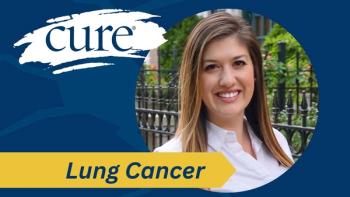
Scalp Cooling for Chemo-Induced Hair Loss Doesn’t Hurt, Sessions Are Long
Questions about whether scalp cooling is painful and how long sessions last were answered by an expert during an interview with CURE®.
Scalp cooling has been shown to help reduce hair loss in patients with cancer treated with chemotherapy. However, before receiving scalp cooling, patients may have common questions about whether it’s painful and how long a session takes.
When patients with cancer receive chemotherapy treatment, the chemotherapy attacks fast-growing cells, which include cancer cells but also other normal cells, according to Memorial Sloan Kettering Cancer Center. This means that the chemotherapy also attacks hair cells, which can lead to hair loss in all parts of the body.
Using the scalp cooling technique may help certain patients with cancer slow down and reduce hair loss, Dr. Stephen Kimani, breast medical oncologist at the University of Utah Huntsman Cancer Institute, told CURE® during an interview.
By lowering the temperature around the scalp, less blood flow to the scalp means less chemotherapy will attack the hair cells and cells near the scalp, he explained.
LEARN MORE:
However, before patients consider this intervention of scalp cooling, people also ask questions such as “Is scalp cooling painful?” and “How long do scalp cooling sessions last?”
So, we spoke with Kimani to answer these two commonly asked questions.
In terms of scalp cooling and pain, Kimani noted that it’s not painful, although it can be uncomfortable.
“The best way to think about it is, if you put your hand in the freezer for a bit longer, let’s say you’re trying to find something and your hand is in there for a good five minutes, the kind of pain is related to the cooling effect,” he explained.
When patients receive scalp cooling, Kimani mentioned that the devices can reach close to 32 degrees Fahrenheit, which is the freezing point of water.
Although it’s an uncomfortable temperature, he said, the body tends to get used to the cold temperature after 10 to 12 minutes.
A session of scalp cooling happens during a chemotherapy infusion, so the length of time a scalp cooling session lasts largely depends on how long the treatment takes, Kimani explained.
It’s important that the hair follicles are cold enough before patients can receive chemotherapy treatment, he said, which takes approximately 30 minutes. Then, patients will receive treatment with the cold cap on, which may take a couple of hours. When the chemotherapy infusion is completed, patients continue wearing the cold cap until their bodies metabolize the treatment. This period may take up to two hours, Kimani said.
Transcript:
It's not comfortable, but it's not out-of-this-world painful, so I'll give you an example. The best way to think about it is, if you put your hand in the freezer for a little bit longer, like let's say you're trying to find something and your hand is in there for a good five minutes, the kind of pain is, is related to the cooling effect. This device — the cold cap — is trying to lower the temperature of the scalp, so they are often running at a temperature that is quite low, and sometimes even close to [32 degrees Fahrenheit]. So that is not how our bodies are designed to feel and enjoy temperature, so it can be uncomfortable.
The other way to think about it is, if you are to soak yourself in an ice bath, there's that initial discomfort. That's how [a cold cap] feels like. What I tell patients is that similar to that bath analogy, you get used to it after several minutes. So, the first 10 or 12 minutes can be uncomfortable. And patients should plan accordingly and talk to the doctors as well.
One possible intervention is to take a dose of pain medication, if you're able to before you go into the treatment so that it covers that half an hour. But then for the rest of it, it can be bearable, as the temperature is more uniformly cold around your scalp.
Other side effects that patients have talked about are feeling dizzy or lightheaded. We haven't experienced patients reporting severe lightheadedness where they pass out. But again, this concept of freezing your brain or your head in a way, kind of makes you feel lightheaded. And in some patients that can also treat their nausea. Most of this is mild and is anticipated and planned for appropriately and should not preclude someone from trying this intervention.
You want to make sure the hair follicle is cold before chemotherapy gets there, right? So oftentimes, patients will have will wear the cold cap for several minutes, usually about half an hour before the chemotherapy starts.
And then they have to wait during the entirety of the chemotherapy infusion. Then, they have to still keep it on while the chemotherapy medication is still being processed by the body after the infusion has ended. And while it's being broken down, metabolized and eliminated. So based on that, you can see that the type of chemotherapy they are getting, the type of regimen they're getting, will determine how long the cooling goes on for. So most standard breast cancer regimens, [patients] will wear this cold cap for 30 minutes before they'll wait during the infusion which is often a couple of hours. And then maybe 20 minutes to two hours. But this will vary depending on other regiments and how long it takes their bodies to clear it after the infusion is done.
For more news on cancer updates, research and education, don’t forget to




